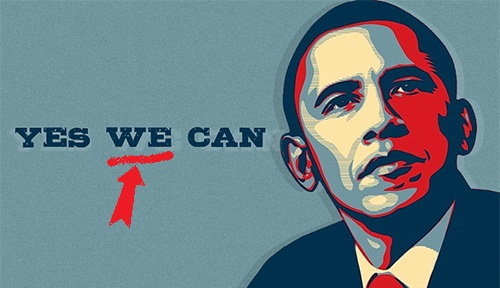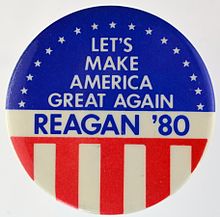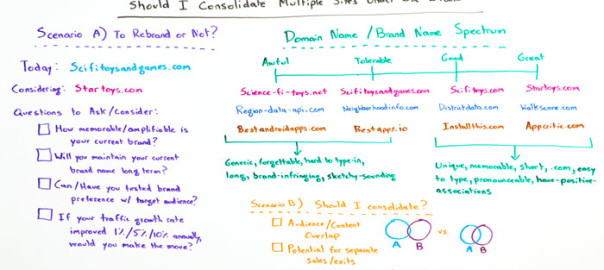Moz is one of those companies that really understands that sharing great information and helping others to understand (“Youtility” as Jay Baer calls it) the intricacies of digital marketing puts them on the map as accessible professionals. Rand Fishkin often contributes to a feature called “Whiteboard Fridays” which are always worth a watch/read. Below is just one of a number of really terrific posts.
Ever mass-deleted a bunch of impersonal emails from your inbox? Brand fatigue is a real threat to your marketing strategy. In today’s Whiteboard Friday, Rand discusses why brands become “background noise” and how you can avoid it.

For reference, here’s a still of this week’s whiteboard. Click on it to open a high resolution image in a new tab!
Video Transcription
Howdy, Moz fans, and welcome to another edition of Whiteboard Friday. This week we’re going to chat a little bit about why no one is paying attention to your brand, to your marketing. It’s the perilous pitfall of brand fatigue.
Brand fatigue sucks
So you have all had this happen to you. I promise you have. It’s happened in your email. It’s happened in your social streams. It’s happened through advertising in the real world, online and offline.
I’ll give you an illustration. So I sign up for this newsletter. I decide, “Hey, I want to get some houseplants. My house has no greenery in it.” So I sign up for Green Dude Houseplants’ newsletter. What do I get? Well, I get a, “Welcome to Our Newsletter.” Oh, okay.
And then maybe the next day I get, “Meet Our New Hires.” Meet our new hires? I’m sure that your new hires are very important to you and your team, but I just got introduced to your brand. I’m not sure I care that much. To me, you’re all new hires. You might as well be, right? I don’t know you or the team yet.
“Best Summer Ever Event,” okay, maybe, maybe an event. “Edible Backyard Gardens, you know, I don’t have a backyard. I was signing up for a houseplant newsletter because it was in my house. “See Us at the Garden Show,” I don’t want to go to the garden show. I was going to buy from you. That’s why I’m online.

Okay, thanks.
How to cause brand fatigue
It’s not just the value of the messaging. It’s the frequency that it happens at. You’ve seen this. I’m on an email list that I signed up for, I think it’s called FounderDating. It’s here in Seattle. I think it’s in San Francisco. I thought it was a really cool idea when I signed up for it. Then I have just been inundated with messages from them. I think some of them are actually worthy of my participation, like I should have gone to the forum. I should have replied. I should have checked out what this particular person wanted. But I get so much email from them that I’ve just begun to hit Delete as soon as I get it.
We’ve actually had this problem at Moz too. If you’re a Moz subscriber, you probably get a new email every time a new crawl is completed, and a campaign is set up, and you have new rankings data. Some of that’s really important, right? Like if you’re paying attention to this particular site’s rankings and you want to see every time you get an update, well yeah, you need that email. But it’s actually kind of tough to opt in to which ones you want and with what frequency and control it all from one place.
We have found that our email open rates, engagement rates have actually drifted way, way down over time because, probably, we’ve inundated you with so much email. This is a big mistake that Moz has made in our email marketing, but a lot of brands make it in tons of places. So I want to help you avoid that.
1) Too many messages on a medium

Brand fatigue happens when there are too many messages, just too many raw messages on a medium. You start to see the same brand, the same name, the same person again and again. Their logo, their colors, the association you have, it just becomes background noise. Your brain goes into this mode where it just filters it out because it can’t handle the volume of stuff that’s coming through. It needs a filtration mechanism. So it starts to identify and associate your brand or your logo or your name or a person’s name with “filter.” Filter that out. That goes in the background.
2) Value provided is too low or infrequent to deserve attention
It also happens when the value provided is too low or too infrequent to deserve attention. So this might be what I’m talking about with FounderDating. One out of every maybe five or six messages, I’m like, “Oh yeah, that was interesting. I should pay attention to that.” But when it becomes too infrequent, that same filtration happens.

Too few of the high value messages means you’re not going to pay attention, you’re not going to engage with that brand, with that company anymore. All of us marketers will see that in the engagement rates. No matter the medium, we can look at our numbers and see that those are going down on a percentile basis, and that gets really frustrating.
3) The messaging can’t be effectively tuned or controlled by the user
So this is the problem that Moz is having where we don’t have that one email control center where you say how often you want exactly which messages updating you of which notifications about which campaigns, and newsletter and da, da, da. So your message frequency is either all the time high or very high and so you’re, “I don’t like any of those options.”

Very frustrating.
How NOT to cause brand fatigue
Now, I do have some solutions and suggestions. But it’s platform by platform.
Email
Start very conservative with your email marketing and highly personal. In fact, I would actually recommend personally sending all the messages out to your first few hundred users if you possibly can, because you will get a great rapport that you develop individually with person by person. That will give you a sense for what your audiences like and what kind of messaging they prefer, and they’ll know they can reply directly to you.
You’ll create that highly-engaged experience through email that will mean that, as you scale, you have the experience from the past to tell you how often you can and can’t email people, what they care about and don’t, what they filter and don’t, what they’re looking for from you, etc. You can thenwatch your open, unsubscribe and engagement rates through your email program. No matter what program you might be using, you can almost always see these.
Then you can watch for, “Oh, we had a spike.” That spike is a good thing. That means that people were highly engaged on this email. Let’s figure out what resonated there. Let’s go talk to folks. Let’s reach out to the people who engaged with it and just say, “Hey, why did you love this? What did you love about it? What can we do to give you more value like this?”
Or you watch for dips. Then you can say, “Oh man, the last three email newsletters that we’ve sent out, we’ve seen successive declines in engagement and open rates, and we’ve seen a rise in unsubscribe rates. We’re doing something wrong. What’s going on? What’s the root cause? Is it who we’re acquiring? Is it new people that signed up, or is it old-timers who are getting frustrated with the new stuff we’re sending out? Does this fit with our strategy? What can we fix?”
Be careful. The thing that sucks about brand fatigue is a lot of platforms, email included, have systems, algorithmic systems set up to penalize you for this. With email, if you get high unsubscribes and low engagement, that will actually kill your long-term chances for email marketing success, because Gmail and Yahoo Mail and Microsoft’s various mail programs and whatever installed mail your targets might have, whatever they’re using, you will no longer be able to break through those email filters.
The email filter that Gmail has says, “Hey, a lot of people click Unsubscribe and Report Spam. Let’s put this in the Promotions tab.” Or, “Hey, a lot of people are clicking Report Spam. You know what? Let’s just block this sender entirely.” Or, “Gosh, this person has in the past not engaged very much with these messages. We’re going to not make them high priority anymore.” Gmail has that automatic high priority system. So you’re getting algorithmically turned into noise even if you might have had something that your customers really cared about.
Blog or other content platform
This is a really interesting one. I would strongly urge you to read Trevor Klein from Moz’s blog postabout the experiment that we and HubSpot did around how much content to produce and whether lowering content or increasing content had positive effects. There are some fascinating results from that study.
But the valuable thing to me in that is if you don’t test, you’ll never know. You’ll never know the limits of what your audience wants, what will frustrate them, what will delight them. I recommend you don’t create content unless you can have a great answer for the question, “Who will help amplify this and why?” I don’t mean, like, “Oh, well I think people who really like houseplants will help amplify this.” That’s not a great answer.
A great answer is, “Oh, you know, I know this guy named Jerry. Jerry runs a Twitter account that’s all about gardening. Jerry loves our houseplants. He’s a big fan of this. He’s particularly interested in flowering cacti. I know if we publish this post, Jerry will help amplify it.” That’s a great answer. You have 10 Jerrys, great. Hit Publish. Go for it. You don’t? Why are you making it?
Watch your browse rate, your conversion rate, and conversion rate…. I don’t mean necessarily all the way to whatever you’re selling, your ecommerce store products or your subscription or whatever that is. Conversion rate could be conversion rate to an email newsletter or to following you on a social platform or whatever.
You can watch time on site and amplification per post to essentially get a sense for like, “Hey, as we’re producing content, are we seeing the metrics that would indicate that our content marketing is being successful?” If the answer to that is no, well we need to retool it. It turns out there’s actually no prize for hitting Publish.
You might think that your job as a content producer or a content marketer is to make content every day or content every week. That’s not your job. Your job is to have success with the metrics that are going to predict and correlate to the strategies you need as a business to acquire customers, to grow your marketing channels, to grow your brand’s impact, to help people, whatever it is that your mission is.
I highly recommend finding your audiences’ sweet spot for both focus and frequency. If you do those things, you’re going to do a great job with avoiding brand fatigue around your content.
Twitter, Facebook, and other social media
Last one is social. I’ll talk specifically about Twitter and Facebook, because most things can be classified in there, even things like Instagram and LinkedIn and the fading, sadly, Google+ and those sorts of things.
Twitter, generally speaking, more forgiving as a platform. Facebook has more of those algorithmic elements to punish you for low engagement.
So, for example, I’ve had this happen on my personal Facebook page where I’ve published a few things that people just didn’t really find interesting. This is on my Rand Fishkin Facebook page, different from the Moz one. It turns out that that meant that it was much harder for me next time, even with content that people were very engaged around, to reach them.
Facebook essentially had pushed in. They were like, “You know what? That’s three or four posts in a row from Rand Fishkin that people did not like, didn’t engage with. The next one we’re going to set the bar much higher for him to have to climb back up before we decide, ‘Hey, we’ll show that to more and more people.’”
Lately I’ve been having more success getting a higher percentage of my audience into the impression count of people who are actually seeing my posts on Facebook by getting better engagement there. But that’s a very challenging platform.
Users of both, however, are pretty sensitive, nearly equally sensitive. It’s not like Facebook users are more sensitive. It’s just that Facebook’s platform is more sensitive because Facebook doesn’t show you all the content you could possibly see.
Twitter is just a super simplistic newsfeed algorithm. It’s just, who posted last. So Twitter has that real time kind of thing. So I would still say for both of these, aim to only share stuff that gets high engagement, especially as your brand.
Personal account, do whatever you want, test whatever you want. But as your brand’s account, you want that high engagement over and over again because that will predict more people paying attention to you when you do post, going back and looking through your old social posts, subscribing to you, following you, all that sort of thing, considering you a leader.
You can watch both Twitter Analytics and your Facebook page’s stats to see if you’re having a dip or a spike, where you’re having success, where you’re not.
I actually love using Twitter and a little bit LinkedIn or Google+ to see what gets very high engagement and then I know, “Okay, I should re-share that on Twitter because my audience on Twitter is very temporal.” Two hours from now it’s going to be less than 1% overlap between who sees a Twitter post now and who sees a Twitter post 2 hours from now, and that’s a great test bed for Facebook as well.
So if I see something doing extremely well on Twitter or on Google+ or on LinkedIn, I go, “Aha, that’s the kind of thing I should post on Facebook. That will increase my engagement there. Now I can go post and get more engagement next time and build up my authority in Facebook’s newsfeed algorithm.
So with all of this stuff, hopefully, as you’re producing content, sharing content, building an email subscription, building a blog platform, you’re going to have a little less brand fatigue and a little more engagement from your users.
I look forward to chatting with you all in the comments. We’ll see you again next week for another edition of Whiteboard Friday. Take care.
Video transcription by Speechpad.com
Original POST











